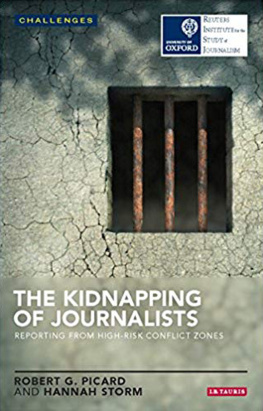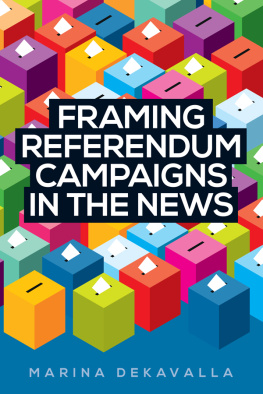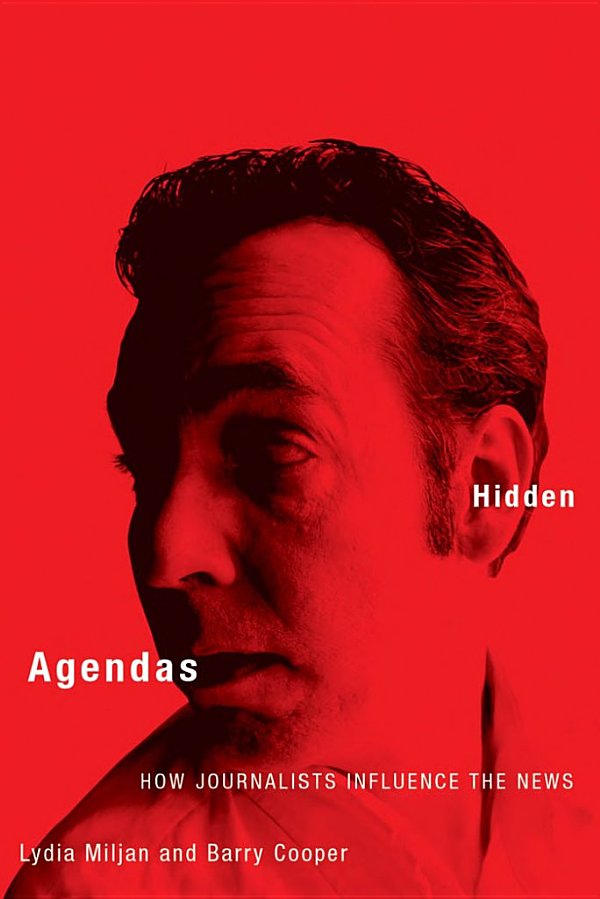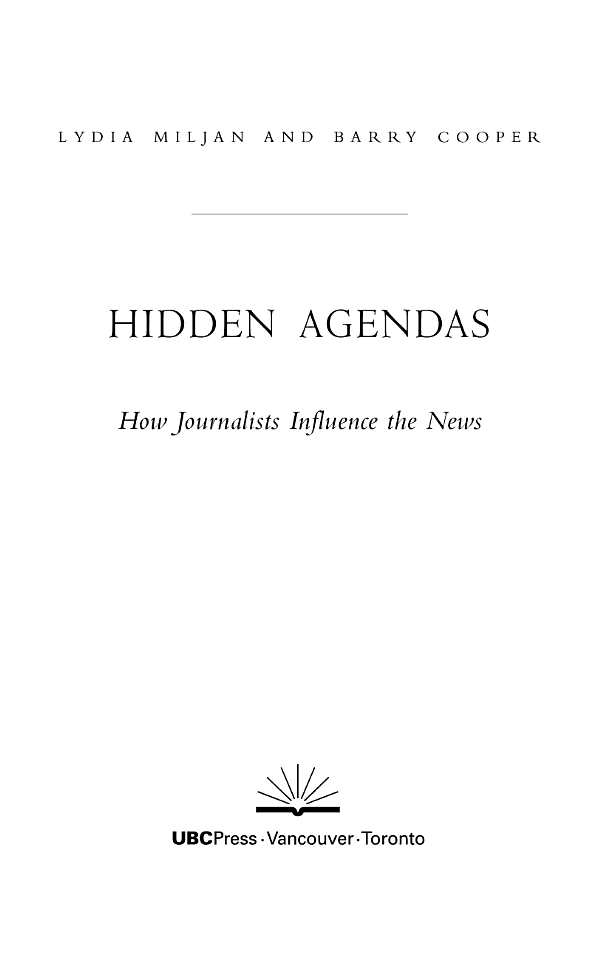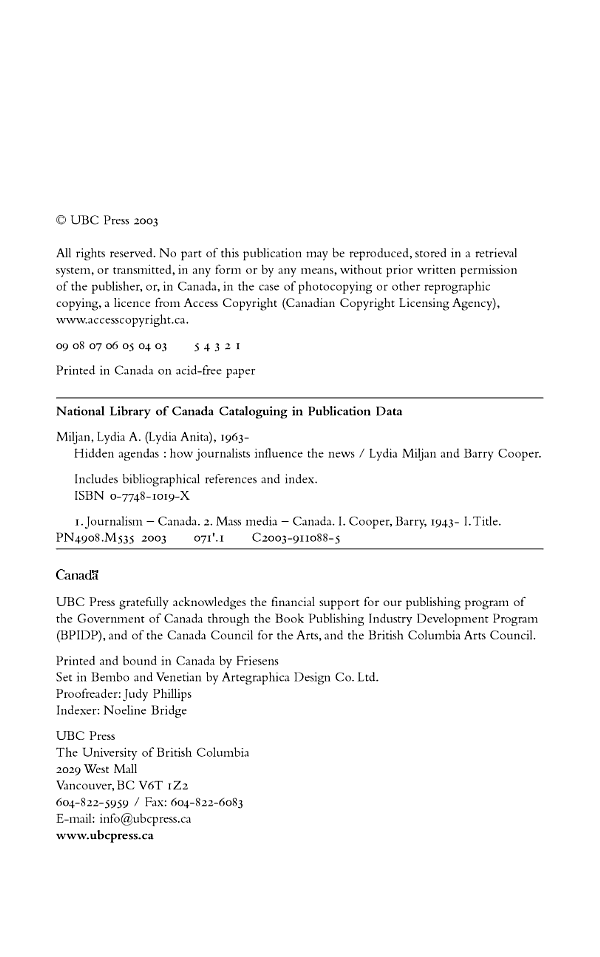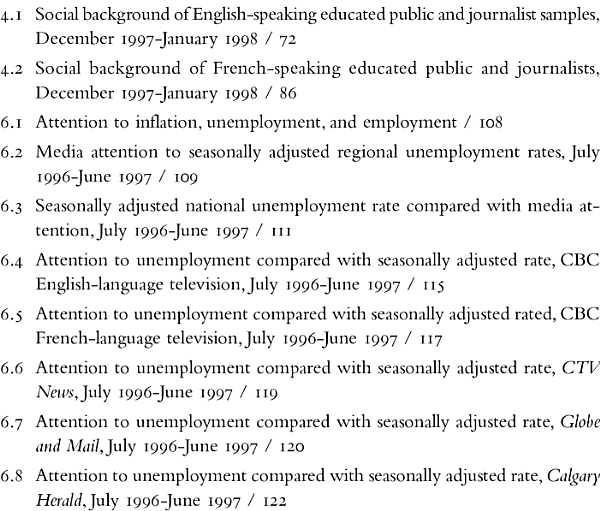FOR DEREK AND DENISE
Let us now tackle the problem of journalism deadliest of the weeds on Crabbes Heath.
CYRIL CONNOLLY
Precisely because those in the media are persons of slight education, they depend on the intellectuals whom they surpass in beauty and income.
HARVEY MANSFIELD JR.
[The media] seem to be nothing in themselves, and often say that they merely report what goes on. In truth, they do nothing on their own; they act in the manner of a compassionate passerby who sees an accident in the street and rushes to see if someone else can be of any assistance. But the media greatly affect how we regard government.
HARVEY MANSFIELD JR.
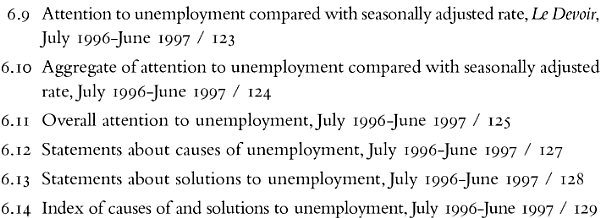
PREFACE
The origin of this book is reflected in its dual authorship. In 1994, co-author Barry Cooper wrote an analysis of CBC television news, Sins of Omission. Among other things, that book examined news transcripts and compared what made it to air with other sources of information. The technique used is generally referred to as qualitative content analysis, and the conclusion, suggested by the title, was not just that a great deal of relevant information was omitted, but that it was deliberately omitted. As a result, TV news on CBC was both partial and systematically unbalanced.
As we indicate in the present book, there is considerable controversy about why the media present readers and audiences with the coverage they do. Much of this discourse is speculative, and ranges from the effects of time zones on how stories from California or British Columbia get treated in New York and Toronto to the attractiveness of journalism to thin-skinned people with narcissistic personalities.
One of the more obvious and perhaps important intervening variables between the raw reality of an event experienced in the world and the sophisticated and technically mediated product consumed through the flickering screen or the daily paper is the journalists the actual reporters, producers, and editors who convert events into news. Some, but not all, of their choices are conditioned by the imperatives of deadlines, the requirements of the medium, or various other widespread and well-studied considerations. But some choices are also conditioned by the political opinions that journalists hold. Or so most commonsensical individuals might plausibly believe.
For media analysts, however, there is a problem not so much to determine the extent to which the personal views of journalists influence the product, but to document the existence of an influence. The reason why this problem exists may be summarized by the claim that the news merely is a mirror to events because journalists simply report what happens.
The second source of this book, Lydia Miljans doctoral dissertation, The Backgrounds, Beliefs, and Reporting Practices of Canadian Journalists (2000), is a sustained examination of the validity of journalists conventional claim that, since they are professionals, their views whatever these may be have no impact on the product, the news itself. In the course of this work, Miljan conducted a survey of the attitudes of Canadian journalists and compared these data to data simultaneously collected from the general population. Much of the evidence brought to light by that survey, the first ever so conducted in Canada, is reported in this book.
Together, these two studies constitute what the French call the problmatique of the present book. Common sense indicates its simply prudent to have an attitude of skepticism toward the notion that the beliefs of journalists have no effect on their reporting. The reason is simple enough: it is true that journalists have long claimed to be professionals, rather like doctors and lawyers and men and women of the cloth. But one difference is obvious: whatever your anesthesiologist may think about global warming, the fate of the swift fox, or the fiscal policy of the government of Prince Edward Island, that opinion is not likely to have a noticeable impact on her ability to administer an epidural. In contrast, reporting, producing, editing, or visualizing a story can never begin to approach the technical procedures of an anesthesiologist. Stories are told from perspectives: that is not an accident or defect, but the essence of stories. This book tells the story of where Canadian journalists tell their stories from.
Both sources for this book relied on the material collected in Canadas National Media Archive, of which Miljan has been the director since its inception in 1987. The archive is a division of the Fraser Institute and we would be gravely remiss if we did not first thank Dr. Michael Walker, executive director of the institute, for his intellectual support and a bracing managerial style that is such a refreshing change from that at most Canadian universities. We would also like to express our gratitude to the Donner Canadian Foundation and the Earhart Foundation for their assistance in supporting the original study by Miljan.
Any undertaking of this magnitude depends on the good humour and hard work not only of the authors but also, and more important, of the people who aided in collecting the data. For the survey research we are grateful for the advice, hard work, and good judgment of Conrad Winn and his polling firm, COMPAS. It was Conrad who helped us shave costs and encouraged us to include the general population portion of the public opinion survey. As for the content analysis, it could not have been done without the hard work of four indefatigable research assistants who devoted their summer months to reading, analyzing, and coding French and English news content. We have had numerous research teams in the past, but this group far outpaced our usual excellent talent. Avril Allen, Jonathan McFarlane, Timothy Buckland, and Sue Hall went beyond the call of duty. We would also like to thank our editors, Emily Andrew and Camilla Jenkins, for their support and attention to detail.
As with all scientific work, whether in social, medical, or natural fields, this study is incomplete. Accordingly we would like to thank, by anticipation, any readers who might find fault with our methods or disagree with our interpretation. Critics are always to be welcomed, never to be feared. We need to be informed of our errors as much as we would like to inform others of our version of things. Besides, with two authors, the other one made the mistake, so no one needs to feel embarrassed.
PART 1
CONTEXT
CHAPTER 1
WHY JOURNALISTS?
We begin with an example that has gained legendary notoriety among supporters of the Reform Party/Canadian Alliance. In April 1997, Canadian political parties and the media were gearing up for a spring election campaign. That campaign would centre on issues nearly devoid of substantive policy content, focusing instead on symbolic issues such as which political party was truly Canadian. Perhaps most astonishing, at least for its supporters, one party, Reform, was labelled by the others and by the leaders of those parties as racist. The NDP leader, Alexa McDonough, stated that the Reform Partys stance on Quebec would incite civil war (Canadian Press 1997). Name calling by political opponents is certainly not new in election campaigns, nor is it new for the media to report those allegations. What was unusual is that on 22 April 1997 before the campaign had begun the media, on their own initiative, declared that Reform was racist. Peter Mansbridge, the anchor for Canadian Broadcasting Corporations (CBCs) flagship news program, The National,1 started the domestic segment of the news by linking the Reform and Liberal parties:


